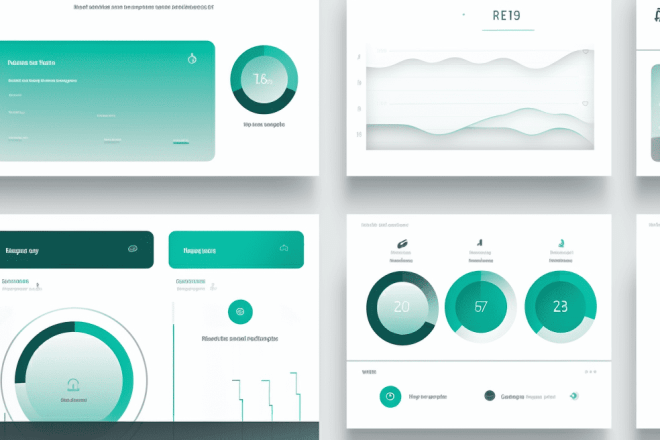How do you convince people to buy? Normally, you would use words, show off your confidence and give them an irrefutable reason why they should purchase. However, you can’t accomplish this with persuasive design.
Persuasive design uses a mix of psychology to motivate people to use a company’s product through visual aspects. Here we will explore what it is and the key principles that make up persuasive design.
What Is Persuasive Design?
Persuasive design is a practice designers use to focus on influencing people to buy a certain product or service based on human behavior. In other words, you can use psychological and social theories to persuade customers to make a purchase.
In persuasive design, many businesses often use it in e-commerce, public health and corporate management sectors.
However, designers can use it in any field to influence human behavior. For instance, media technology such as televised advertisements and poster campaigns has always played a role in persuasion.
Yet as long as you have a good understanding of your target audience, you can use it to apply these key principles in persuasive design.
7 Key Principles of Persuasive Design
These seven essential persuasive design principles will help you craft a compelling experience for your audience. Discover them below so you can empower them to take action with ease and confidence.
1. Clarity
As humans, we naturally question everything we see for the very first time. You may wonder what that something is and what it can do for you.
For instance, the first time a visitor comes onto your website, they need to find answers quickly. Therefore, the first things your website needs to answer as soon as a user visits include:
- What is this website?
- What can I use it for? Is this what I’ve been looking for?
- Why should I use it? How is it useful?
Yet, it’s not just your homepage that needs to answer these questions — all of it, including your about and product pages, need to be clear from the start. That’s why clarity is such an important aspect of persuasive design. Visuals tend to give people a better understanding.
In fact, research shows that the human brain can process visual information 60,000 times faster than words.
2. Visual Appeal
As soon as your visitors understand they’re in the right place and are interested in your offer, you can draw them in further with visual appeal.
First impressions are everything. Users can form an opinion about your site within under a second, which is where they determine whether they want to leave or stay.
Visuals play a major role in influencing people’s first impressions. If you can provide a good first impression by keeping it simple and using conventional layouts, you’ll hold a higher chance of getting a good impression.
3. Visual Hierarchy
Visual hierarchy is one of the most important principles in persuasive design. Ranking certain parts of your website can help direct users’ attention and provide opportunities to guide them along the way.
Essentially, visual hierarchy leads users down to the main goal of the website page without taking away their sense of control. This key principle is also known as “tunneling” in persuasive design.
Theoretically, tunneling guides your users through a decision process — which you can accomplish by removing unnecessary functionality and distracting their attention to help them complete the process.
4. Attention
As you guide your users with visual hierarchy, you know you’ve got their attention already. However, holding their attention for as long as possible is important.
Images of people and the use of contrast are a great way to hold users’ attention. People always like to look at other people – and with the help of contrast – it’s a surefire way to grab their attention.
Another element that works is by surprising them with the unexpected. If you’ve got an interesting visual, you can conserve users’ attention and use a compelling headline to draw them into the copy.
Another thing to remember is that the human eye always attempts to recognize patterns. Once it identifies one, it’s hard to ignore. Therefore, it’s critical to avoid patterns by stylizing text, breaking text apart and adding eye paths.
5. Call-to-Action
One clearly defined CTA (call-to-action) is all you need to get users to the end goal of the page. While it’s perfectly okay to use a secondary CTA, you’ll want to make one of them primary, so you don’t confuse your users.
People can feel intimidated when you present them with too many options. Therefore, you’ll want to provide them with a trigger that’s easily identifiable.
Knowing when to place the CTA is key, though. Throughout their journey, it’s crucial to hit the right emotions at the right time with the customers.
For instance, if you’re selling a complex product — providing more information helps users decide whether they’re ready to take action. Once you’ve given all of the necessary information, that is where you can finally present the trigger.
6. Social Proof
Social proof is a powerful influence on your audience’s decisions based on their actions, opinions and choices of others. The idea behind social proof is that if others are doing something, it must be the right thing to do. Overall, social proof is a key principle of persuasive design because it builds trust and encourages users to take action.
Consider sharing users’ experiences by providing testimonials and reviews. When providing users with insights into others’ experiences, this makes them more inclined to try a product or service.
Displaying the number of subscribers, followers or clients can also signal popularity and trustworthiness. It gives potential users the reassurance they’re in good company.
Other examples of social proof include expert recommendations and trust badges from reputable organizations. These endorsements convey authority and credibility, persuading users to trust the product or service.
7. Scarcity
Scarcity is fundamental to persuasive design because it revolves around the idea that people will desire something if they perceive it as available for a limited time. Essentially, it creates a sense of urgency that causes them to fear missing out on a valuable opportunity.
In persuasive design, scarcity can be highly effective in driving user action and increasing conversions. Consider creating limited-time offers, special discounts or exclusive promotions that expire. These can encourage users to act quickly.
Another common approach is to display low stock levels or the number of items remaining. Implementing this tactic prompts users to secure their purchase before it’s too late.
When incorporating scarcity into your design, maintain a balance between creating urgency and maintaining credibility. Overusing scarcity tactics can lead to skepticism and distrust, which may diminish the overall persuasiveness of your design.
Combining Principles for Maximum Effectiveness
To achieve higher effectiveness of persuasive design, you must be strategic in combining the key principles. Using multiple principles allows you to tap into different aspects of human psychology and enhance the overall persuasiveness of the design. For instance, combining scarcity and social proof can create a powerful urgency while building user trust.
When combining principles, ensure they complement each other and maintain a cohesive design. Overloading users with too many persuasive techniques may lead to confusion. Yet, you can strike the right balance to create a seamless and compelling user experience.
Common Mistakes to Avoid in Persuasive Design
When implementing persuasive design, it’s essential to avoid common mistakes that prevent you from creating a great user experience. Here are some of the pitfalls to steer clear of:
- Overloading users with information: While providing sufficient information is crucial, bombarding them with excessive details can lead to overload and decision paralysis. Instead, maintain a clean design focusing on key messages and persuasive elements.
- Inconsistent messaging or design elements: Consistency is key to building trust and credibility. Ensure your messaging, visuals and overall structure remain coherent throughout the user journey to maintain your brand’s identity.
- Ignore user feedback and preferences: Being inconsiderate of your target audience’s needs can result in an ineffective design. Instead, gain input and utilize data-driven insights to optimize the persuasive design.
- Neglecting mobile optimization: With the increasing prevalence of mobile devices, it’s imperative to create a responsive and mobile-friendly design that delivers a seamless experience.
Measuring the Effectiveness of Persuasive Design
It’s essential to measure the effectiveness of persuasive design to determine its impact on user behavior and identify room for improvement. To do this, establish key performance metrics that align with your design goals. Collect data using analytics tools, user surveys or heatmaps to gain insights into how users interact with your design.
Regularly analyzing the data will help you to make informed decisions about the adjustments you need to make accordingly. Therefore, monitoring your results is crucial so you consistently meet your goals and deliver a successful user experience.
Implementing the Key Principles
Influence user behavior by using persuasive design. You have various ways to execute it. However, implementing these key principles gives you what you need to keep your website convincing.
Therefore, when starting a new design project, it helps to keep these in mind.


